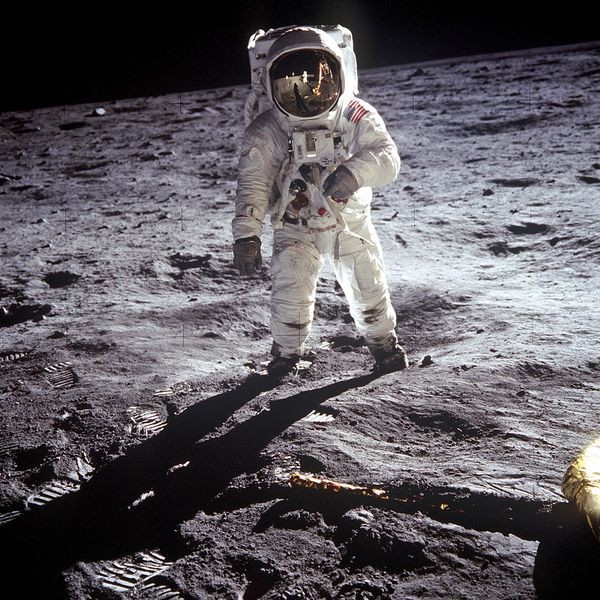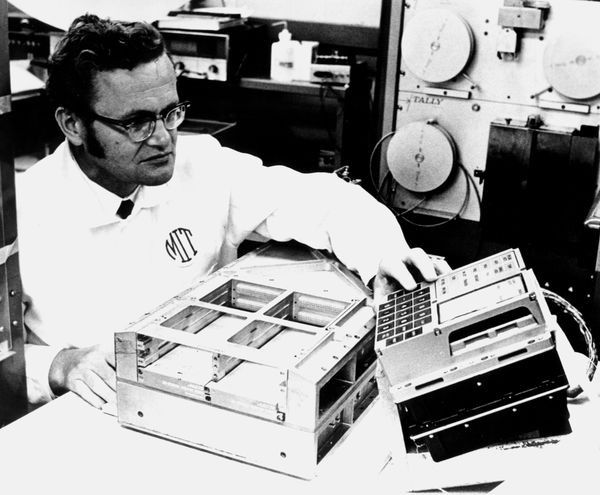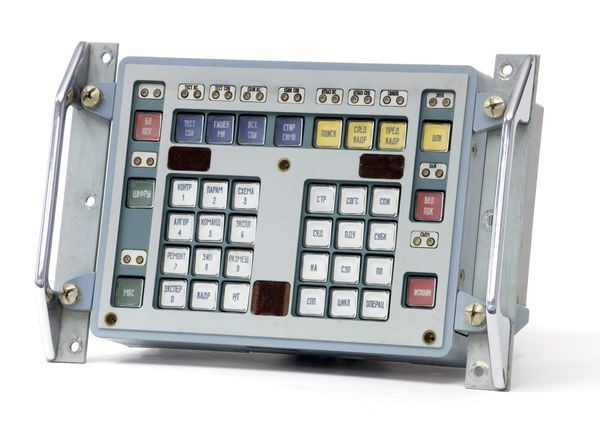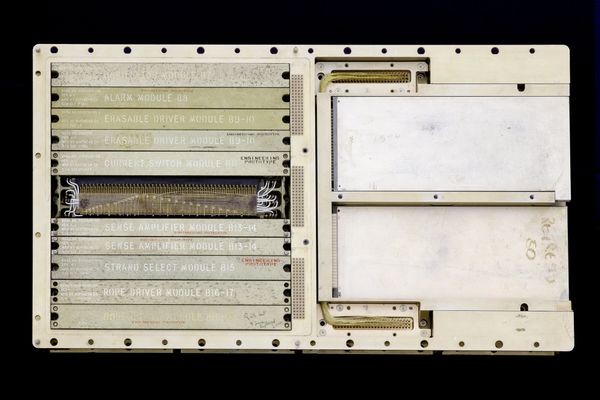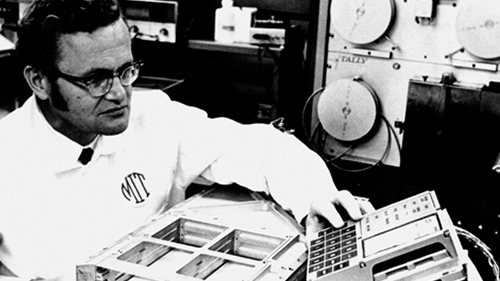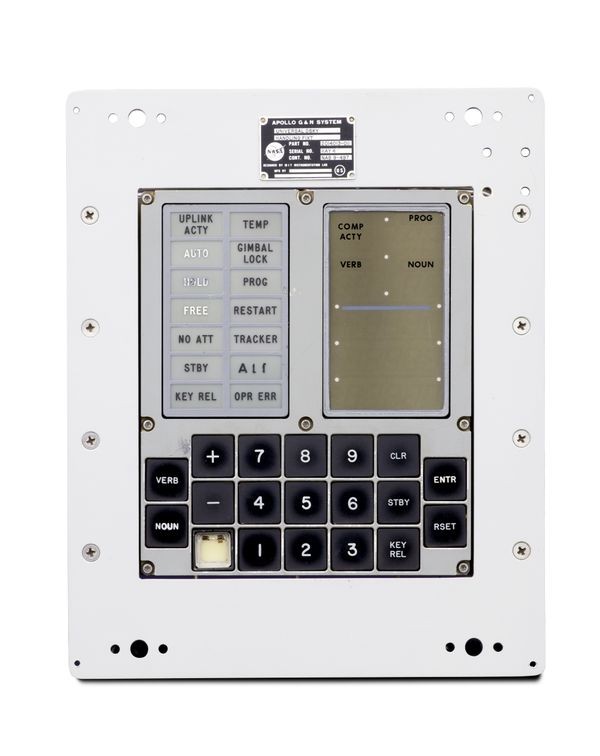Aiming for the Moon
Buzz Aldrin on the Moon
With the help of computers, Astronauts Neil Armstrong and Buzz Aldrin realized one of humanity’s oldest dreams: to walk on the Moon. On July 20, 1969, they spent two and a half hours outside their Lunar Module “Eagle.”
Aiming for the Moon
Guiding missiles to targets 6,000 miles away requires careful calculation. Guiding spacecraft to the moon, 238,000 miles away, is far more complex, demanding reliable systems with substantial computing power.
America’s space program built on technology developed for World War II rocketry and guidance systems, mining the expertise of German scientists brought to the U.S. after the War.
And it continued to borrow ballistic missile technology developed for the military. The onboard computer of the Navy’s Polaris missile, for instance, inspired the Apollo program’s Guidance Computer, developed at MIT’s Instrumentation Laboratory.
Apollo Guidance Computer with designer Eldon Hall
Eldon Hall, who led the hardware team for the Apollo Guidance Computer (AGC) at MIT’s Instrumentation Laboratory, convinced NASA to adopt integrated circuits for its guidance systems. The design was based on work done for the Polaris missile guidance computer.
View Artifact DetailMIR on-board computer block
The MIR Space Station, designed to house Soviet (later Russian) cosmonauts for long periods, was occupied for more than 12 years between 1986 and 2001. This computer was part of its Information Display System.
View Artifact DetailApollo Guidance Computer logic module (prototype)
The Apollo Command Module and Lunar Excursion Module each used an AGC to monitor, steer and communicate with the guidance system. Software engineering practices were extremely strict to avoid bugs.
View Artifact DetailEldon Hall: Where was the Guidance Computer in the Apollo Spacecraft?
Chapter Menu
1. Where was it in the Spacecraft
2. Integrated Circuits in the Project
Apollo Guidance Computer I/O module (prototype)
Astronauts interacted with the AGC using the display and keyboard (“DSKY”) module, entering commands by number. It took about 10,500 keystrokes on the DSKY to complete a lunar mission.
View Artifact Detail